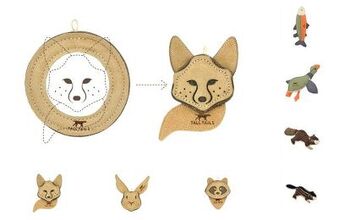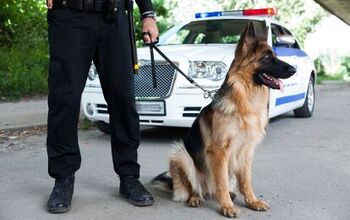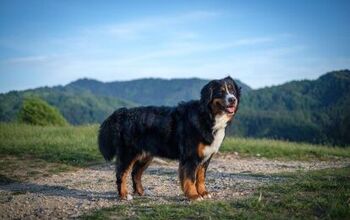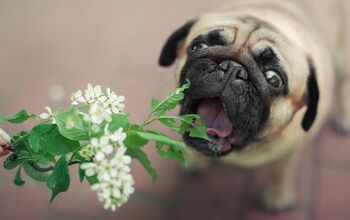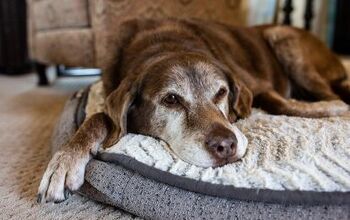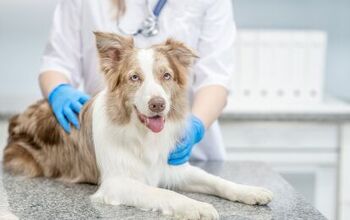Cool Tips to Beat the Heat on Summer Hikes With Your Dog

Summer is fleeting, which is why you want to make the most of it with your dog. If you’re hiking, keep these tips in mind to keep your dog safe and hydrated.
Just like people, many dogs enjoy tackling the trails on a warm summer day. And just like people, dogs can be susceptible to heat stress. High humidity, direct sun, warm asphalt, and sweltering city temperatures are all great reasons for you and your dog to get out of the city and onto a trail. Before you go, there are a few things to know about staying safe while hiking this summer with your dog.
Heat Stroke
Heatstroke is a potentially deadly condition. If your dog begins to show signs, get them to shade and begin to cool their body slowly. Pouring tepid water on the groin, feet, and armpits will help to cool your dog down slowly. Cold water may cause the dog to go into shock. Dogs exhibiting signs of heat stroke will need immediate veterinary care.
Know the Signs of Heat Stroke
- Rapid panting
- Lots of drooling
- Hot skin
- Twitching muscles
- Vomiting
- A dazed look
Plenty of Fresh Water
To cool their bodies, dogs pant. Hah-hah-hah-hah. (Nothing funny here, that’s the sound of a dog panting). Warm air passing over a wet tongue evaporates moisture from the tongue, which cools off the dog’s body. Panting uses a lot of moisture. Keeping your dog hydrated helps them to keep their body cool.
Related: 5 Cool Ways To Keep Your Pet Safe This Summer
Now the trouble is, not all dogs want to drink enough water all the time. Before a hike, add some water to their meal, either soaking kibble or pouring extra over their meal. With the added moisture, your dog will need to have some extra bathroom breaks, so expect to make some adjustments to their bathroom schedule.
Out on the hike, pack plenty of water, but skip the ice cubes. The best bet is just regular room temperature water. Hot water is obviously no good, but cold water might seem like a nice idea, but it actually requires the dog’s body to work harder to warm the cooler water to the dog’s internal temperature. So, tepid water is actually best.
If your dog won’t drink enough on the hike, consider baiting the water. Baited water is an old musher’s trick. Baiting the water means you put something tasty in the water so that the dog wants to drink more. Popular choices are cut-up low sodium hot dogs, sardines, low-sodium chicken broth, or a dab of vanilla ice cream. The trick isn’t to overdo it, just a little bit to tempt the dog to drink. It might take some experimenting to find the right mix.
Another way to increase your dog’s hydration on longer hikes is to choose treats or food that contain higher water content. This means trading in the kibble and biscuits or adding moisture if your dog’s regular diet is dry kibble. There are many great options to add to your dog’s food to improve moisture content. If you have the space in your pack, consider bringing high-moisture, dog-safe foods like pumpkin puree, cucumbers, and watermelon. You can also add canned food to your dog’s usual kibble to increase the moisture levels.
The Best Laid Plans
The best way to avoid the hot sun is to plan your hikes in the early morning to avoid the worst of the hot weather. The cooler temperatures of the evening have reduced the air and surface temperatures, making it safer for your dog to hike.
Hiking earlier in the day has the added benefit that the trails will have fewer people on them, too. But, be advised that the earlier part of the day is also when the wildlife tends to be more active as well. So keep your eyes peeled and a dog on a leash to avoid any conflicts.
If possible plan a hike that follows a river, or leads to a great swimming hole. You can both cool off by swimming or wading in the water. Keeping your dog hydrated and on a leash means you can keep him from drinking water at the swimming spot. Giardia, leptospirosis, and blue algae may be present in the water. Drinking contaminated water can have some really crappy results (no pun intended) for your dog.
Summer Grooming
A good grooming means your dog will be able to tolerate the heat a little better. Brushing and bathing your dog will remove any dead hair and skin that’s left on their body. Less dead hair means the dog’s coat is less likely to tangle and the skin can breathe easier. A great way to get rid of lots of dead hair is a bath. Your dog will feel better, and look better! For summer baths, stay away from fruity-smelling shampoos, as those are more likely to attract mosquitoes.
If you have a long-coated, or double-coated dog, you might be tempted to have them shaved down for the summer. Groomers say to skip the shave, as the hair may not grow back and some of that hair will protect the skin from sunburns. I am not a fan of shaving a coated dog, but I will scissor trim some of the hair from their groin and legs to help cool them off.
Set a Proper Pace
Hiking on a hot summer day is strenuous. The distance your dog can travel during a spring romp may be significantly shorter and slower on a hot day. So keep a cool head, and play it by ear. It is far better to rest in a shady spot than push on and regret it later. Now get out there and enjoy a summer hike with your dog.
Protect Your Dog’s Paw Pads
One major risk that many people overlook during the heat of summer is the damage to their paw pads. Hot surfaces like rocks, sand, and dirt trails can scald this sensitive spot on your dog. The result is pain and, if it happens earlier in the hike, potentially a secondary infection from the damaged paws being exposed to the dirt on the trail.
There are steps that you can take to protect your dog’s paw pads if you know you are going to be hiking a trail with heavy sunshine. Try purchasing a pair of summer-friendly dog boots that will offer ventilation to keep your dog cool while also providing a layer of protection between his paws and the hard surface. If your dog isn’t comfortable wearing boots at first, that’s completely normal! This is something that you may have to introduce slowly, giving him time to adjust to the feeling of wearing them. Try introducing them at home where your dog is most comfortable. When first putting them on, incorporate plenty of treats to make it a positive experience.
Choose Your Trail Strategically
When selecting a trail for your dog, choose one that offers more shade or a body of water for a quick cool-down dip. Some trails are all sunshine and rocks, creating a greater hazard to your dog’s safety than others. By choosing your trail with your dog in mind, you can ensure that everyone involved has a great time!
Consider Using Cooling Products
There are many great products on the market that are designed specifically to help cool your dog down on a hot day. Some of these can also be used effectively when you’re hitting the trail. Most cooling vests, bandanas, and collars use the concept of evaporation to keep your dog from overheating. To use them, simply wet them down and put them on your dog. As the water in the vest or collar evaporates, it takes your dog’s body heat with it. Of course, this will require access to water.
The warmer the temperatures, the quicker that the vest or collar will dry up completely. If you are choosing a hiking trail with water access, you can easily wet the products down without any additional gear. But, if you don’t have something like a lake or river nearby, you will need to carry extra water with you to be able to wet down your dog’s cooling products. If they are allowed to fully dry, they will become an additional layer and could actually make your dog heat up faster.

Kevin Roberts lives for adventure. Together with his pack of rescue dogs and his husband, he spends as much time outdoors as possible. Kevin lives by the motto: "Get outside and play with your dogs!
More by Kevin Roberts









